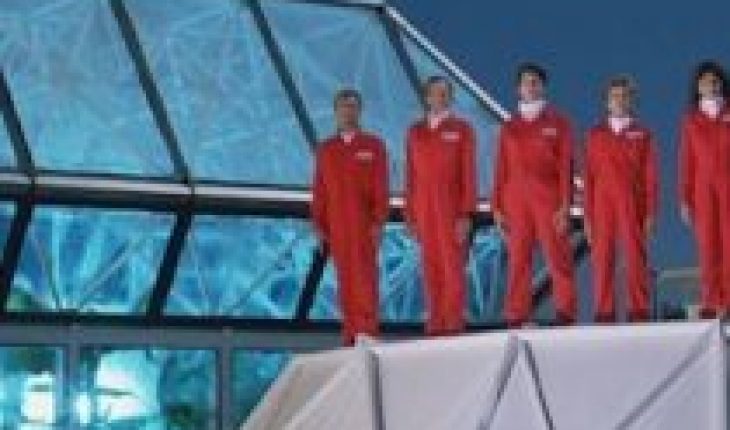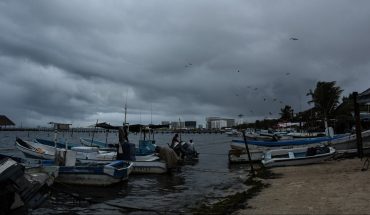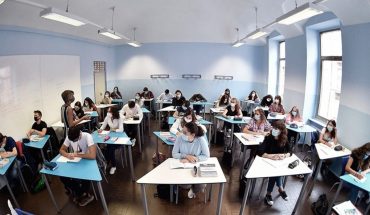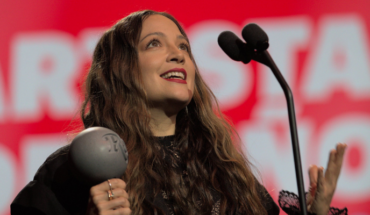
This experiment was part of the Biosphere 2 project and the goal was to see if, in the future, humans could live in similar circumstances in colonies on other planets.
Much of the routine of the eight participants, called “bioferians”, was reduced to agricultural work. They had to grow their own vegetables, collect grains from the soil and obtain proteins from farm animals and fish raised in aquaculture ponds.
What is “gardenophy” and what can teach you about the pursuit of happiness
The experiment, presented as a “space mission” within Earth, grabbed media attention.
But the adventure didn’t end as expected.
The crops did not grow at the estimated rate, the food began to be scarce, the oxygen was insufficient and the tension surfaced in the coexistence of the participants.
A “Garden of Eden”
The original design of the Biosphere 2 complex was the idea of John Polk Allen, a graduate engineer from Harvard University in the United States.
The resort is located in Oracle, in the middle of the Arizona desert
Allen was also the director of Space Biospheres Ventures, which in 1984 purchased the property where the enclosed artificial ecosystem was located in Oracle, in the Arizona desert in the United States.
Construction was completed in 1989 and consisted of three buildings. The first, a large dome of glass and steel; the second an underground area of technology and the third an area intended for human habitat.
Biosphere 2 reproduced several terrestrial ecosystems such as a tropical forest and an ocean with coral reefs
The dome measured almost 28 meters at its highest point and contained five ecosystems: a tropical forest, a desert, a savannah, a mangrove and an ocean with coral reefs. Inside was also the area dedicated to agriculture.
Inside the technological building were housed the components that maintained the interior climate, with temperature and humidity controllers.
“The main objective was to determine whether an artificial biosphere could function, increasing energy and biomass reserves, preserving a high level of biodiversity and biomes, stabilizing its water, soil and atmosphere,” project manager John Polk Allen and one of its participants, Mark Nelson, wrote in a document resulting from the research in 1997.
What the ambitious and immense map of the seabed with which they hope to know the depths of our planet
The researchers involved wanted to know whether a self-sustaining biosphere, with all the life ecosystems of Earth, could “provide a creative and healthy life for humans who worked as naturalists and scientists,” according to the document.
“It was like creating a kind of Garden of Eden indoors”
Basically, it was about checking whether the human being would be able to move to another planet by taking a piece of our own. To this end, scientists traveled the world and collected resources and knowledge to create the artificial ecosystem.
They filled Biosphere 2 with animals, vegetation and the technology needed to maintain the right conditions.
“It was like creating a kind of Garden of Eden indoors,” said Linda Leigh, one of the scientists who was confined, in a recent documentary about the experiment called Spaceship Earth.
And so, in September 1991, four men and four women: Roy Walford, Taber MacCallum, Mark Nelson, Sally Silverstone, Silke Schneider (who would later be replaced by Abigail Alling), Mark Van Thillo, Jane Poynter and Linda Leigh.
Media impact
“They called me on the phone proposing to join the volunteer team and before they finished the sentence I had already said yes,” recalls Nelson, one of the biospheres, in the documentary.
Sally Sylverstone and Jane Poynter were two of those involved in the project
“We were pioneers, the first biospheres. They had given us a new world to take care of him,” Nelson added.
Meanwhile, the world learned of the project thanks to the echo of the media, to the point where they needed to hire a public relations team to deal with media pressure.
Shortly after confinement began, the members’ initial enthusiasm began to dissipate. The friction and discussions increased.
“You never know what can happen when you lock yourself up to live with seven other people for two years,” Nelson recalls.
Tourists strolled off-site, on guided tours where they watched researchers work through the glass, as if it were a visit to the zoo.
Inside, each of the participants had a specific mission. They had to deal with livestock, the preservation of coral reefs, fish farming and crops, for example.
The subversive diagram with which Copernicus forever changed our idea of the cosmos
In addition, they assessed the behaviour of gases, especially oxygen and carbon dioxide.
To recreate the artificial ecosystem, scientists collected resources from various parts of the world
Roy Walford was a physician, and his job was to monitor the effects of confinement on the health of the eight volunteers.
“If we can transplant a coral reef, run a farm, not pollute the atmosphere or water, and recycle nutrients, you can learn great lessons here,” Nelson thought during his experimental confinement.
Hunger, tension and lack of oxygen
The biospheres agree that food shortages did not help to have a healthy environment.
Of all the crops, one of the most successful, as Allen and Nelson revealed in the research results, was bananas. In this way, the confined had to use this fruit for multiple recipes. They even tried to produce banana wine, but without success.
“We had to make important decisions, because some crops were much better off than others. So we ended up eating the same product, like beetroot, soup-shaped or salad-shaped,” Sally Sylverstone, another of the bioferanas.
What would happen on Earth if humans disappeared
But food wasn’t the only resource that started to run low. Both confinement participants and other scientists monitoring the experiment from outside detected an increase in carbon dioxide levels and a decrease in oxygen.
“I couldn’t finish a sentence without my breath short,” Nelson said.
The eight participants left the confinement at the stipulated two years, despite the difficulties that occurred
“I climbed a couple of steps and there I would stop to breathe again,” Linda Leigh recalls.
The lack of enough food made biospheres losing weight, and to keep the oxygen levels low there was a risk of brain damage.
“We breathed each other’s air, we were suffocated and starved,” Leigh said.
“Being fighting, too, didn’t help us achieve the goal we had locked ourselves in here for,” Nelson lamented.
The experiment was crumbling and the first idea of surviving two years alone with what was inside Biosphere 2 did not work. Extra food and carbon dioxide extractors and oxygen pumps were introduced from outside.
The press called the project a “failure.”
No more confinements
Despite needing help from abroad and not being able to lead a self-sufficient life, the project managed to last the two years stipulated.
The community is now owned by the University of Arizona and is used as a research center
In 1994, a second expedition returned to the interiors of Biosphere 2, but was cancelled before the mission was completed.
Today, Biosphere 2 belongs to the University of Arizona and is used as a research center on Earth’s ecosystems.
Nearly three decades later, there are no more confinements or experiments inside the giant crystal dome.





